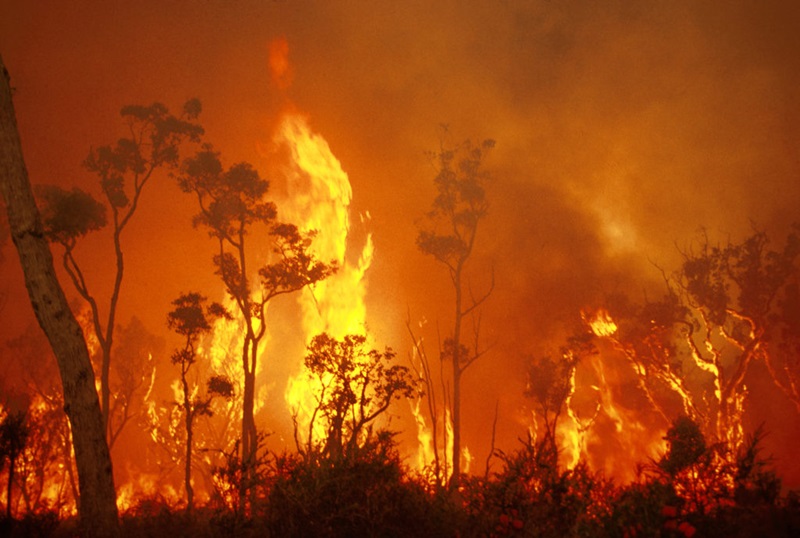Browsing Residential Property Security: Understanding the Relevance of a BAL Report
Wiki Article
Ensuring Bush Fire Protection Through Proper BAL Report Evaluation
In the world of bush fire security, the meticulous analysis of Bushfire Strike Degree (BAL) records stands as a foundation for protecting residential or commercial properties against the devastating effect of wildfires. With environmental aspects and residential or commercial property features playing considerable duties in identifying the degree of danger, a thorough understanding of BAL scores comes to be necessary.
Understanding Bushfire Assault Degree (BAL)
In the realm of bushfire security, understanding the Bushfire Attack Level (BAL) is extremely important for guaranteeing efficient reduction techniques. BAL is a system utilized to gauge the potential danger a structure may deal with from a bushfire. It considers elements such as the kind of plants, the incline of the land, the Fire Danger Index, and the Fire Severity Index. Understanding the BAL ranking of a residential property is critical for building home builders, proprietors, and policymakers to execute suitable steps to protect against bushfire risks.
Relevance of BAL Report Analysis
A vital element in bushfire defense preparation involves the detailed evaluation of BAL reports to assess the potential dangers and establish appropriate mitigation methods. BAL records offer vital information about the potential impact of bushfires on a home based on different variables such as vegetation kind, range to potential fire hazards, and incline of the land. Examining these reports with precision is extremely important in creating efficient bushfire protection measures customized to the particular risk account of a building.Applying Fire Security Procedures
Carrying out effective fire defense procedures is important for safeguarding residential or commercial properties in bushfire-prone locations. One of the primary methods to enhance fire security is by creating defensible room around buildings. This includes clearing combustible vegetation, such as completely dry leaves and branches, within a particular span of the residential property. Additionally, setting up fire-resistant roof products can help lower the risk of coal sparking the roofing system throughout a bushfire. Correctly kept displays and rain gutters are additionally important to stop debris build-up that could fuel a fire.Additionally, having a well-kept and ample supply of water, such as a storage tank or pool, can assist firefighters in their initiatives to shield the property. It is important to have a clear discharge strategy in position and to make sure that all citizens recognize with the procedures. Additionally, having firefighting devices conveniently available, such as hose pipes and fire extinguishers, can aid in tackling tiny place next fires before they intensify. In general, executing a combination of these fire defense procedures can considerably increase the opportunities of guarding buildings throughout bushfire events.
Mitigating Dangers in Fire-Prone Areas
To strengthen residential or commercial properties against bushfire risks, a tactical emphasis on mitigating threats in fire-prone locations is imperative. One essential aspect of risk mitigation is preserving defensible space around residential additional hints properties by getting rid of combustible greenery, making sure appropriate spacing between structures and trees, and employing fireproof landscape design techniques.Moreover, building or retrofitting buildings with fire-resistant materials and guaranteeing proper upkeep of roof coverings, rain gutters, and outside cladding can considerably enhance the building's strength to bushfires. Establishing and practicing a bushfire emergency situation plan with all residents, including emptying procedures and interaction methods, is likewise vital in mitigating threats successfully. By adopting an aggressive approach to take the chance of mitigation in fire-prone areas, residential or commercial property proprietors can better shield their possessions and enhance total bushfire preparedness.
Ensuring Residential Or Commercial Property Safety And Security and Durability
Guaranteeing the safety and security and strength of homes in fire-prone locations calls for a steadfast commitment to robust preventative actions and calculated preparation. Home security begins with executing efficient measures to lower fire risks.Durability, on the other hand, entails the capacity of a building to endure and recuperate from a bushfire. This can be enhanced through the setup of ash guards on home windows and vents, making sure that entrance factors for coal are decreased. Furthermore, having a well-balanced emptying plan and exercising it frequently can dramatically increase home durability. Collaborating with next-door neighbors and neighborhood fire authorities can additionally boost the safety and resilience of homes in fire-prone areas. By proactively addressing these facets, building owners can much better secure their assets and enjoyed ones from the danger of bushfires.
Conclusion
Finally, making sure bushfire protection with appropriate BAL report analysis is crucial for comprehending the degree of risk postured by bushfires and executing needed fire defense steps. By minimizing dangers in fire-prone locations and guaranteeing building safety and durability, communities and individuals can much better plan for and click reply to bushfire occasions. It is crucial to focus on fire precaution to secure lives and property in these high-risk atmospheres.In the realm of bush fire security, the thorough evaluation of Bushfire Strike Level (BAL) reports stands as a foundation for guarding residential or commercial properties against the disastrous influence of wildfires (BAL Report). Understanding the BAL rating of a home is important for residential property owners, policymakers, and contractors to carry out appropriate actions to safeguard against bushfire threats

BAL reports supply crucial info regarding the possible impact of bushfires on a home based on numerous variables such as vegetation type, distance to prospective fire dangers, and slope of the land (BAL Report). In general, carrying out a mix of these fire defense actions can significantly enhance the possibilities of protecting residential properties throughout bushfire occasions
Report this wiki page